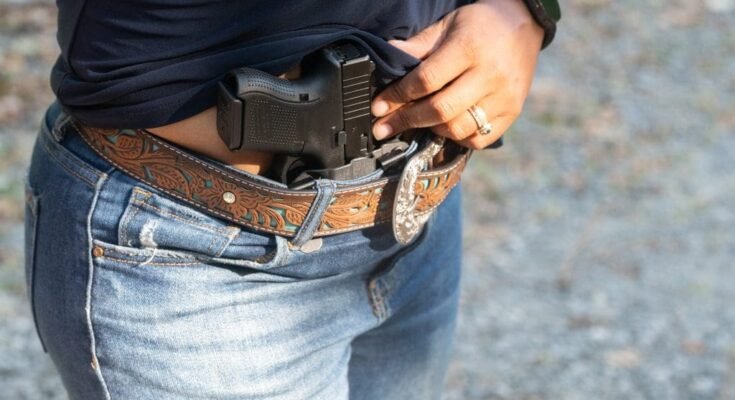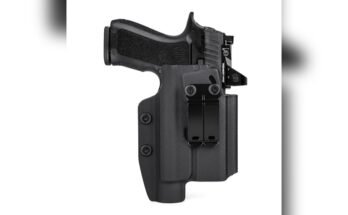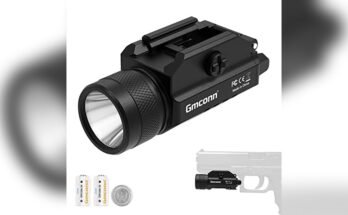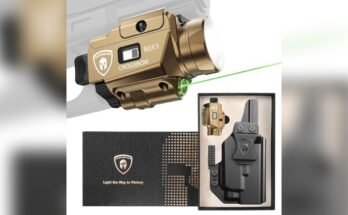If you carry or plan to carry, you need a clear answer to one simple question: what is a concealed carry holster? In short, it is a purpose-built holder that secures a firearm close to the body, covers the trigger, and allows safe, discreet daily carry within the law. I’ve tested dozens over the years for comfort, fit, and safety. In this guide, I’ll share practical insights, data-backed advice, and friendly tips so you can choose well and carry with confidence.
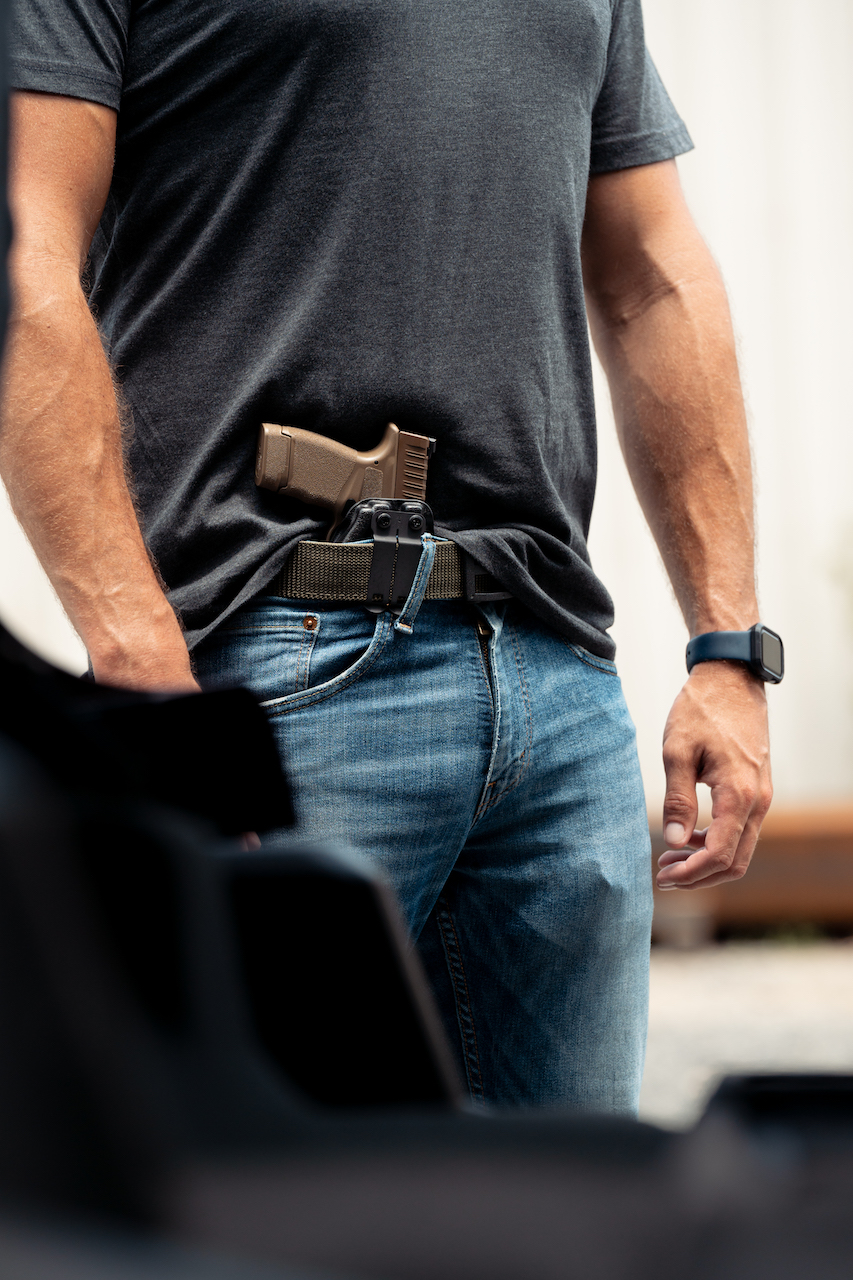
Source: harrysholsters.com
What A Concealed Carry Holster Actually Does
A concealed carry holster is designed to hold your handgun in a consistent position while covering the trigger guard to prevent negligent discharges. It balances three goals: safety, access, and concealment. A good holster also spreads weight for comfort and keeps the gun stable during normal movement.
Most modern holsters feature some form of retention so the gun stays put. They are shaped for a specific model to ensure a secure fit. When chosen well, the holster helps you carry responsibly within your local laws.

Source: www.blackhawk.com
Main Parts And Features To Know
– Shell or body: The formed material that hugs your firearm and covers the trigger.
– Attachment: Clips or loops that connect to your belt or clothing.
– Sweat guard: A raised portion that shields the slide from your body.
– Cant and ride height: Small adjustments that fine-tune angle and depth for comfort.
– Retention: Passive friction or active devices that hold the gun in place.
Look for solid hardware, smooth edges, and a true-to-model fit. The trigger must be fully covered and the mouth of the holster should stay open when the gun is removed for easier reholstering.
Popular Types Of Concealed Carry Holsters
– Inside-the-waistband holster: Sits inside your waistband for deep concealment. Common for everyday carry.
– Appendix IWB: Worn near the front of the body for easier access when seated. Prioritize comfort and proper fit.
– Outside-the-waistband holster: Rides outside the waistband and can be concealed with a cover garment. Often the most comfortable.
– Pocket holster: Designed for small pistols in a front pocket. Keeps the gun upright and covers the trigger.
– Shoulder holster: Distributes weight with straps; needs a cover garment and good adjustment.
– Belly band or clothing-integrated holster: Flexible options for athletic wear or non-belt outfits. Ensure firm trigger coverage.
– Off-body carry options: Purpose-built bags or packs with dedicated holster compartments. Keep the bag on you and under control at all times.
Each style trades some comfort, concealment, and access. Pick the one that best fits your body, daily routine, and clothing.
Materials: Kydex, Leather, Hybrid, And More
– Kydex: Rigid, durable, and consistent retention. Easy to clean and keeps its shape.
– Leather: Molds to your body over time, comfortable, but can soften with sweat and age.
– Hybrid: Kydex shell with a soft backer. Blends comfort with retention, but check hardware often.
– Nylon and elastic: Lightweight with wide coverage. Ensure stability and a clear trigger guard.
From long-term use, I find Kydex most consistent day to day, while leather feels great once broken in. Hybrids can be a sweet spot for many.
Retention And Safety Basics
Retention keeps your gun secure during normal movement. Most concealed carry holsters use passive retention, created by the molded fit. Some add an active device, like a thumb release.
Key safety points:
- Trigger coverage should be complete and rigid.
- The holster must not allow the gun to fall out during daily activity.
- The draw should be smooth and free of obstructions.
- Practice safe handling with an unloaded firearm and follow local laws and certified training guidance.
Comfort, Fit, And Everyday Wear
Comfort is not a luxury; it ensures you actually carry consistently. Small fit tweaks can make a big difference over a full day.
Practical tips:
- Use a purpose-built gun belt to support the holster and reduce sag.
- Adjust cant and ride height to match your body shape and seating needs.
- Choose breathable materials for warm weather to reduce hotspots.
- Start with short wear periods at home to dial in comfort before long days.
From experience, a sturdy belt and minor angle changes often solve 80% of comfort issues.
Legal And Ethical Considerations
Concealed carry laws vary widely by state and municipality. Understand licensing rules, where carry is prohibited, and transport requirements. Keep your permit current and know duty-to-inform rules where you live.
Ethically, the goal of concealed carry is to enhance personal safety while minimizing risk to others. Secure storage at home and in vehicles matters. Avoid handling the firearm in public spaces and follow all local restrictions and best practices.
Training, Practice, And Safe Handling Habits
Professional training is essential. A reputable course covers safe handling, situational awareness, legal basics, and responsible decision-making. Dry practice with an unloaded firearm helps build safe habits, including careful holstering.
Build a routine:
- Verify the firearm is unloaded before practice.
- Keep your finger off the trigger until you intend to fire.
- Use a safe backstop during dry practice.
- Store and transport the firearm in line with local laws and safety guidance.
Consistent, careful practice builds confidence and reduces errors.
How To Choose The Right Concealed Carry Holster
– Match the holster to your exact firearm model for a secure fit.
– Check full trigger coverage and a firm click or tension for retention.
– Pair with a quality belt suited for carry.
– Confirm the holster holds its shape for safe reholstering.
– Test comfort while seated, standing, and walking in your normal clothes.
– Start with a trusted maker known for durable materials and secure hardware.
When in doubt, try two options and wear them for a few days each. Your body will tell you which works.
Care, Maintenance, And Longevity
Holsters wear like shoes. Inspect them often and replace when needed.
Simple upkeep:
- Wipe Kydex clean with mild soap and water; dry fully.
- Condition leather sparingly to prevent softening.
- Check screws and clips monthly; add thread locker if they loosen.
- Watch for cracks, frayed stitching, or deformed areas, and replace at the first sign of failure.
A few minutes of care extends life and preserves safety.
Common Mistakes To Avoid
– Using a generic, ill-fitting holster that does not match your model.
– Allowing clothing or drawstrings to enter the trigger guard.
– Skipping a proper gun belt, causing discomfort and poor stability.
– Reholstering in a rush; take your time and keep the muzzle clear.
– Neglecting local laws on where you can and cannot carry.
These simple checks prevent many problems I’ve seen on the range and in classes.
Frequently Asked Questions Of What Is A Concealed Carry Holster?
What makes a holster safe for concealed carry?
A safe holster covers the trigger completely, holds the gun firmly, and stays open when empty for careful reholstering. It should be made for your exact firearm model.
Is Kydex better than leather?
Kydex offers consistent retention and easy maintenance. Leather can be very comfortable once broken in. The best choice depends on your comfort needs and climate.
Do I need a special belt?
Yes. A purpose-built gun belt supports the holster, prevents sag, and improves comfort. It is one of the most important upgrades you can make.
Can I use one holster for many guns?
It’s best to use a holster molded to your specific firearm. A loose or generic fit can reduce retention and safety.
How often should I replace my holster?
Inspect monthly. Replace if you see cracks, soft spots, loose hardware that won’t stay tight, or if retention changes. Many users replace high-wear holsters every 1–3 years.
Wrap-Up And Next Steps
A concealed carry holster is more than a holder. It is a safety tool that secures your firearm, protects the trigger, and helps you carry responsibly. Choose a model-specific holster with solid retention, pair it with a proper belt, and build safe habits through training and regular practice.
If you’re ready to take the next step, test a couple of reputable options at home, evaluate comfort during your normal day, and commit to ongoing education. Want more guides like this? Subscribe, share your questions in the comments, or explore our related resources below.
Watch This Video on What is a concealed carry holster?
